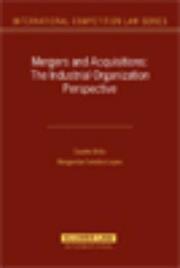| Listing 1 - 10 of 14 | << page >> |
Sort by
|
Book
Year: 1995 Publisher: Cambridge, Mass. National Bureau of Economic Research
Abstract | Keywords | Export | Availability | Bookmark
 Loading...
Loading...Choose an application
- Reference Manager
- EndNote
- RefWorks (Direct export to RefWorks)
Book
Year: 1991 Publisher: Cambridge, Mass. National Bureau of Economic Research
Abstract | Keywords | Export | Availability | Bookmark
 Loading...
Loading...Choose an application
- Reference Manager
- EndNote
- RefWorks (Direct export to RefWorks)
Book
Year: 1991 Publisher: Cambridge, Mass. National Bureau of Economic Research
Abstract | Keywords | Export | Availability | Bookmark
 Loading...
Loading...Choose an application
- Reference Manager
- EndNote
- RefWorks (Direct export to RefWorks)
Book
Year: 1987 Publisher: Cambridge, Mass. National Bureau of Economic Research
Abstract | Keywords | Export | Availability | Bookmark
 Loading...
Loading...Choose an application
- Reference Manager
- EndNote
- RefWorks (Direct export to RefWorks)

ISBN: 9041124519 Year: 2006 Publisher: Alphen aan den Rijn Kluwer law international
Abstract | Keywords | Export | Availability | Bookmark
 Loading...
Loading...Choose an application
- Reference Manager
- EndNote
- RefWorks (Direct export to RefWorks)
Book

ISBN: 9781685855697 1685855695 1555870554 Year: 1987 Publisher: Lynne Rienner Publishers
Abstract | Keywords | Export | Availability | Bookmark
 Loading...
Loading...Choose an application
- Reference Manager
- EndNote
- RefWorks (Direct export to RefWorks)
To provide a firmer foundation for evaluating the consequences of deploying nuclear weapons, this book explores the theoretical underpinnings of the uneasy relationships among nuclear powers.
Book
Year: 1973 Publisher: Washington: American enterprise institute for public policy research,
Abstract | Keywords | Export | Availability | Bookmark
 Loading...
Loading...Choose an application
- Reference Manager
- EndNote
- RefWorks (Direct export to RefWorks)
Book
Year: 1990 Publisher: Cambridge, Mass. National Bureau of Economic Research
Abstract | Keywords | Export | Availability | Bookmark
 Loading...
Loading...Choose an application
- Reference Manager
- EndNote
- RefWorks (Direct export to RefWorks)
The optimal income taxation problem has been extensively studied in one-period models. This paper analyzes optimal income taxation when consumers work for many periods. We also analyze what information, if any, that the government learns about abilities in one period can be used in later periods to attain more redistribution than in a one-period world. When the government must commit itself to future tax schedules, intertemporal nonstationarity of tax schedules could relax the self-selection constraints and lead to Pareto improvements. The effect of nonstationarity is analogous to that of randomization in one-period models. The use of information is limited since only a single lifetime self-selection constraint for each type of consumer exists. These results hold when individuals and the government have the same discount rates. The planner can make additional use of the information when individual and social rates of time discounting differ. In this case, the limiting tax schedule is a nondistorting one if the government has a lower discount rate than individuals.
Book
Year: 1987 Publisher: Cambridge, Mass. National Bureau of Economic Research
Abstract | Keywords | Export | Availability | Bookmark
 Loading...
Loading...Choose an application
- Reference Manager
- EndNote
- RefWorks (Direct export to RefWorks)
The optimal income taxation problem has been extensively studied in one- period models. When consumers work for many periods, this paper analyzes what information, if any, that the government learns about abilities in one period can be used in later periods to attain more redistribution than in a one- period world. liken the government must commit itself to future tax schedules, the gains cane from relaxing self-selection constraints by intertemporal nonstationarity. The effect of nonstationarity is analogous to that of randomization in one-period models. In a model with two ability classes it is shown that the key use of information is that only a single lifetime self-selection constraint for each type of consumer must be imposed. Sane necessary and sufficient conditions for randomization or nonstationarity are given. The planner can make additional use of the information when individual and social rates of time discounting differ. In this case, the limiting tax schedule is a nondistorting one if the government has a lower discount rate than individuals.
Book
Year: 1990 Publisher: Cambridge, Mass. National Bureau of Economic Research
Abstract | Keywords | Export | Availability | Bookmark
 Loading...
Loading...Choose an application
- Reference Manager
- EndNote
- RefWorks (Direct export to RefWorks)
The optimal income tax problem, since it requires self-selection constraints which define nonconvex feasible sets, is one of the many problems in economics for which randomization in the solution may be desirable. For a two-class economy. we characterize the optimal random tax schedules and we present necessary and sufficient conditions for the desirability of local randomization. The standard single-crossing restriction on preferences is not required for these results. We also show that randomization can be beneficial without violating (ex post as well as ex ante) horizontal equity. Lastly, we give an example to demonstrate that the gains from randomization may be large.
| Listing 1 - 10 of 14 | << page >> |
Sort by
|

 Search
Search Feedback
Feedback About UniCat
About UniCat  Help
Help News
News